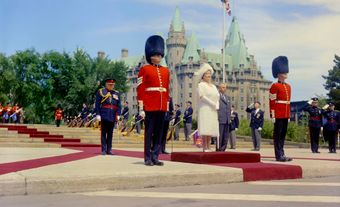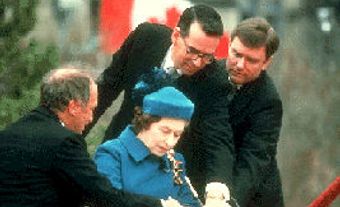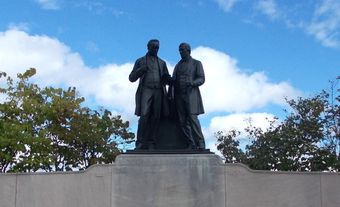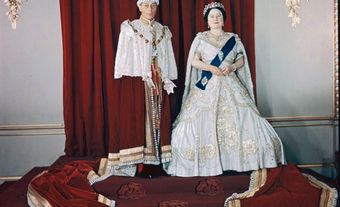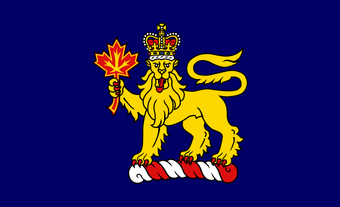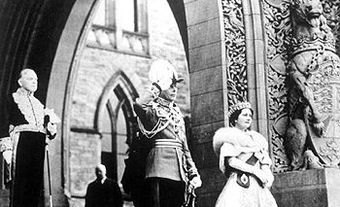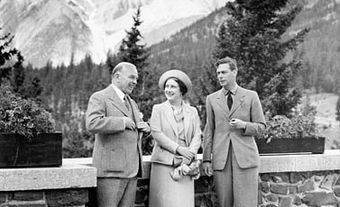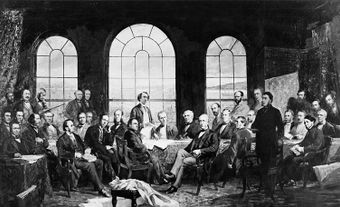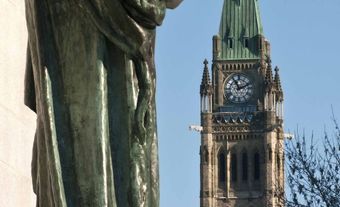Canada’s system of government is called a constitutional monarchy. A monarch is a person from a ruling family who serves as king or queen of their country. In an absolute monarchy, the monarch has unchecked power. In a constitutional monarchy, the monarch must follow the laws of the Constitution. Constitutional monarchs do not directly rule their nation. Instead, they serve as figureheads. Their purpose is more ceremonial. Canada’s monarch, King Charles III, is the head of state. But the prime minister is the head of government.
This article is a plain-language summary of constitutional monarchy. If you would like to read about this topic in more depth, please see our full-length entry: Constitutional Monarchy.

Constitutional Monarchy and the Constitution
Canada’s system of government has roots in both the French and British monarchies. Canada was formed with Confederation in 1867. It remained a constitutional monarchy. Its system of government was based on that of the United Kingdom. But the British government still controlled Canada’s foreign policy. Over the years, Canada gained more control over its own matters. In 1982, Canada’s Parliament gained full control of its Constitution. This was known as patriation.
Under the Constitution, the Crown — or monarch — is the source of sovereignty in Canada. (See also Sovereign.) In other words, the Crown has the power to govern. But it entrusts this power to the elected government. As head of state, the monarch is above politics. They are non-partisan.
How Constitutional Monarchy Works
Canada has a system of responsible government. In this system, the federal and provincial governments have the power to make and enforce laws. In theory, the Crown and the people who represent it can reject the actions of the government or judges. But this rarely happens. In general, the Crown must follow the government. It represents the will of the people. Governments vote on and pass bills. Before bills become law, they must be approved by the Crown. In theory, the Crown could refuse to give its royal assent. But this has not happened since 1945.

The governor general and lieutenant governors represent the monarch in Canada. They have what are called prerogative powers. One of these powers is to ensure that there is always a first minister. This means that the federal government must have a prime minister. And each provincial government must have a premier. After an election, the Crown’s representative invites the leader of the party that won the most seats to form a government.
The Monarch
Canada’s head of state is His Majesty King Charles III. He is also the head of state in the United Kingdom and the other Commonwealth countries. After King Charles III dies, his eldest child, Prince William, the Prince of Wales, will become the monarch.

The Governor General and Lieutenant Governors
Inuk leader Mary Simon became Canada’s 30th Governor General on 26 July 2021. She is the first Indigenous person to hold the position. The governor general represents the Crown at the federal level.
In Canada’s 10 provinces, a lieutenant-governor represents the Crown. In the three territories, commissioners represent the federal government. They perform similar duties to those of lieutenant-governors.
See also Constitution of Canada (Plain-Language Summary); Responsible Government (Plain-Language Summary); Monarchism; Royal Family Collection; Royal Family Timeline.


 Share on Facebook
Share on Facebook Share on X
Share on X Share by Email
Share by Email Share on Google Classroom
Share on Google Classroom
